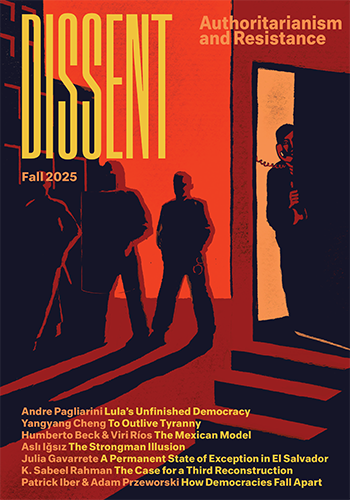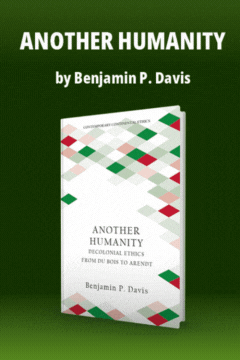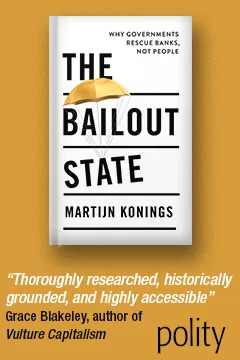Debt Education: Bad for the Young, Bad for America
Debt Education: Bad for the Young, Bad for America
Student loans, for more than half those attending college, are the new paradigm of college funding. Consequently, student debt is, or will soon be, the new paradigm of early to middle adult life. Gone are the days when the state university was as cheap as a laptop and was considered a right, like secondary education. Now higher education is, like most social services, a largely privatized venture, and loans are the chief way that a majority of individuals pay for it.
Over the past decade, there has been an avalanche of criticism of the “corporatization” of the university. Most of it focuses on the impact of corporate protocols on research, the reconfiguration of the relative power of administration and faculty, and the transformation of academic into casual labor, but little of it has addressed student debt. Because more than half the students attending university receive, along with their bachelor’s degree, a sizable loan payment book, we need to deal with student debt.
The average undergraduate student loan debt in 2002 was $18,900. It more than doubled from 1992, when it was $9,200. Added to this is charge card debt, which averaged $3,000 in 2002, boosting the average total debt to about $22,000. One can reasonably expect, given still accelerating costs, that it is over $30,000 now. Bear in mind that this does not include other private loans or the debt that parents take on to send their children to college. (Neither does it account for “post-baccalaureate loans,” which more than doubled in seven years, from $18,572 in 1992–1993 to $38,428 in 1999–2000, and have likely doubled again).
Federal student loans are a relatively new invention. The Guaranteed Student Loan (GSL) program only began in 1965, a branch of Lyndon B. Johnson’s Great Society programs intended to provide supplemental aid to students who otherwise could not attend college or would have to work excessively while in school. In its first dozen years, the amounts borrowed were relatively small, in large part because a college education was comparatively inexpensive, especially at public universities. From 1965 to 1978, the program was a modest one, issuing about $12 billion in total, or less than $1 billion a year. By the early 1990s, the program grew immodestly, jumping to $15 billion to $20 billion a year, and now it is over $50 billion a year, accounting for 59 percent of higher educational aid that the federal government provides, surpassing all grants and scholarships.
The reason that debt has increased so much and so quickly is that tuition and fees have increased, at roughly three times the rate of inflation. Tuition and fees have gone up from an average of $924 in 1976, when I first went to college, to $6,067 in 2002. The average encompasses all institutions, from community colleges to Ivies. At private universities, the average jumped from $3,051 to $22,686. In 1976, the tuition and fees at Ivies were about $4,000; now they are near $33,000. The more salient figure of tuition, fees, room, and board (though not including other expenses, such as books or travel to and from home) has gone up from an average of $2,275 in 1976, $3,101 in 1980, and $6,562 in 1990, to $12,111 in 2002. At the same rate, gasoline would now be about $6 a gallon and movies $30.
This increase has put a disproportionate burden on students and their families—hence loans. The median household income for a family of four was about $24,300 in 1980, $41,400 in 1990, and $54,200 in 2000. In addition to the debt that students take on, there are few statistics on how much parents pay and how they pay it. It has become common for parents to finance college through home equity loans and home refinancing. Although it is difficult to measure these costs separately, paying for college no doubt forms part of the accelerating indebtedness of average American families.
Students used to say, “I’m working my way through college.” Now it would be impossible to do that unless you have superhuman powers. According to one set of statistics, during the 1960s, a student could work fifteen hours a week at minimum wage during the school term and forty in the summer and pay his or her public university education; at an Ivy or similar private school, the figure would have been about twenty hours a week during term. Now, one would have to work fifty-two hours a week all year long; at an Ivy League college, you would have to work 136 hours a week all year. Thus the need for loans as a supplement, even if a student is working and parents have saved.
The reason tuition has increased so precipitously is more complicated. Sometimes politicians blame it on the inefficiency of academe, but most universities, especially state universities, have undergone retrenchment if not austerity measures for the past twenty years. Tuition has increased in large part because there is significantly less federal funding to states for education, and the states fund a far smaller percentage of tuition costs. In 1980, states funded nearly half of tuition costs; by 2000, they contributed only 32 percent. Universities have turned to a number of alternative sources to replace the lost funds, such as “technology transfers” and other “partnerships” with business and seemingly endless campaigns for donations; but the steadiest way, one replenished each fall like the harvest, is through tuition.
Although state legislators might flatter themselves on their belt-tightening, this is a shell game that slides the cost elsewhere—from the public tax roll to individual students and their parents. This represents a shift in the idea of higher education from a public entitlement to a private service. The post–World War II idea, forged by people like James Bryant Conant, the president of Harvard and a major policy maker, held that the university should be a meritocratic institution, not just to provide opportunity to its students but to take advantage of the best and the brightest to build America. To that end, the designers of the postwar university kept tuitions low, opening the gates to record numbers of students, particularly from classes previously excluded. I have called this “the welfare state university” because it instantiated the policies and ethos of the postwar, liberal welfare state.
Now the paradigm for university funding is no longer a public entitlement primarily offset by the state but a privatized service: citizens have to pay a substantial portion of their own way. I call this the “post–welfare state university,” because it carries out the policies and ethos of the neoconservative dismantling of the welfare state, from the “Reagan Revolution” through the Clinton “reform” up to the present draining of social services. The principle is that citizens should pay more directly for public services, and public services should be administered less through the state and more through private enterprise. The state’s role is not to provide an alternative realm apart from the market but to grease the wheels of the market, subsidizing citizens to participate in it and businesses to provide social services. Loans carry out the logic of the post–welfare state because they reconfigure college funding not as an entitlement or grant but as self-payment (as with welfare, fostering “personal responsibility”), and not as a state service but a privatized service, administered by megabanks such as Citibank, as well as Sallie Mae and Nellie Mae, the original federal nonprofit lenders, although they have recently become independent for-profits. The state encourages participation in the market of higher education by subsidizing interest, like a start-up business loan, but eschews dependence, as it leaves the principal to each citizen. You have to pull yourself up by your own bootstraps.
This also represents a shift in the idea of higher education from a social to an individual good. In the postwar years, higher education was conceived as a massive national mobilization, in part as a carryover from the war ethos, in part as a legacy of the New Deal, and in part as a response to the cold war. It adopted a modified socialism, like a vaccine assimilating a weaker strain of communism in order to immunize against it. Although there was a liberal belief in the sanctity of the individual, the unifying aim was the social good: to produce the engineers, scientists, and even humanists who would strengthen the country. Now higher education is conceived almost entirely as a good for individuals: to get a better job and higher lifetime earnings. Those who attend university are construed as atomized individuals making a personal choice in the marketplace of education to maximize their economic potential. This is presumably a good for the social whole, all the atoms adding up to a more prosperous economy, but it is based on the conception of society as a market driven by individual competition rather than social cooperation, and it defines the social good as that which fosters a profitable market. Loans are a personal investment in one’s market potential rather than a public investment in one’s social potential. Like a business, each individual is a store of human capital, and higher education provides value-added.
This represents another shift in the idea of higher education, from youthful exemption to market conscription, which is also a shift in our vision of the future and particularly in the hopes we share for our young. The traditional idea of education is based on social hope, providing an exemption from work and expense for the younger members of society so that they can explore their interests, develop their talents, and receive useful training, as well as become versed in citizenship—all this in the belief that society will benefit in the future. Society pays it forward. This obviously applies to elementary and secondary education (although given the voucher movement, it is no longer assured there, either), and it was extended to the university, particularly in the industrial era. The reasoning melds citizenship ideals and utilitarian purpose. The classical idea of the American university propounded by Thomas Jefferson holds that democratic participation requires education in democratic principles, so it is an obligation of a democracy to provide that education. (The argument relates to the concept of franchise: just as you should not have to pay a poll tax to vote, you should not have to pay to become a properly educated citizen capable of participating in democracy.) The utilitarian idea, propounded by Charles Eliot Norton in the late nineteenth century and James Conant in the mid-twentieth, holds that society should provide the advanced training necessary in an industrially and technologically sophisticated world. The welfare state university promulgated both ideal and utilitarian goals, providing inexpensive tuition and generous aid while undergoing a massive expansion of physical campuses. It offered its exemption not to abet the leisure of a new aristocracy (Conant’s aim was to dislodge the entrenched aristocracy of Harvard); it presupposed the long-term social benefit of such an exemption, and indeed the GI Bill earned a return of seven to one for every dollar invested, a rate that would make any stockbroker turn green. It also aimed to create a strong civic culture. The new funding paradigm, by contrast, views the young not as a special group to be exempted or protected from the market but as fair game in the market. It extracts more work—like workfare instead of welfare—from students, both in the hours they clock while in school as well as in the deferred work entailed by their loans. Debt puts a sizable tariff on social hope.
Loans to provide emergency or supplemental aid are not necessarily a bad arrangement. But as a major and mandatory source of current funding (most colleges, in their financial aid calculations, stipulate a sizable portion in loans), they are excessive if not draconian. Moreover, as currently instituted, they are more an entitlement for bankers than for students. The way they work for students is that the federal government pays the interest while the student is enrolled in college and for a short grace period after graduation, providing a modest “start-up” subsidy, as with a business loan, but no aid toward the actual principal or “investment.” For lenders, the federal government insures the loans. In other words, banks bear no risk; federal loan programs provide a safety net for banks, not for students. Even by the standards of the most doctrinaire market believer, this is bad capitalism. The premise of money lending and investment, say for a home mortgage, is that interest is assessed and earned in proportion to risk. As a result of these policies, the banks have profited stunningly. Sallie Mae, the largest lender, returned the phenomenal profit rate of 37 percent in 2004. Something is wrong with this picture.
There is no similar safety net for students. Even if a person is in bankruptcy and absolved of all credit card and other loans, the one debt that cannot be forgone is student loans. This has created what the journalists David Lipsky and Alexander Abrams have called a generation of “indentured students.” We will not know the full effects of this system for at least twenty years, although one can reasonably predict it will not have the salutary effects that the GI Bill had. Or, simply, students from less privileged classes will not go to college. According to current statistics, the bottom quarter of the wealthiest class of students is more likely to go to college than the top quarter of the least wealthy students. Opportunity for higher education is not equal.
Debt is not just a mode of financing but a mode of pedagogy. We tend to think of it as a necessary evil attached to higher education but extraneous to the aims of higher education. What if we were to see it as central to people’s actual experience of college? What do we teach students when we usher them into the post–welfare state university?
There are a host of standard, if sometimes contradictory, rationales for higher education. On the more idealistic end of the spectrum, the traditional rationale is that we give students a broad grounding in humanistic knowledge—in the Arnoldian credo, “the best that has been known and thought.” A corollary is that they explore liberally across the band of disciplines (hence “liberal education” in a nonpolitical sense). A related rationale is that the university is a place where students can conduct self-exploration; although this sometimes seems to abet the “me culture” or “culture of narcissism” as opposed to the more stern idea of accumulating knowledge, it actually has its roots in Socrates’s dictum to know oneself, and in many ways it was Cardinal John Henry Newman’s primary aim in The Idea of a University. These rationales hold the university apart from the normal transactions of the world.
In the middle of the spectrum, another traditional rationale holds that higher education promotes a national culture; we teach the profundity of American or, more generally, Western, culture. A more progressive rationale might reject the nationalism of that aim and posit instead that higher education should teach a more expansive and inclusive world culture but still maintain the principle of liberal learning. Both rationales maintain an idealistic strain—educating citizens—but see the university as attached to the world rather than as a refuge from it. At the most worldly end of the spectrum, a common rationale holds that higher education provides professional skills and training. Although this utilitarian purpose opposes Newman’s classic idea, it shares the fundamental premise that higher education exists to provide students with an exemption from the world of work and a head start before entering adult life. Almost every college and university in the United States announces these goals in its mission statement, stitching together idealistic, civic, and utilitarian purposes in a sometimes clashing but conjoined quilt.
The lessons of debt diverge from these traditional rationales. First, debt teaches that higher education is a consumer service. It is a pay-as-you-go transaction, like any other consumer enterprise, subject to the business franchises attached to education. All the entities making up the present university multiplex reinforce this lesson, from the Starbucks kiosk in the library and the Burger King counter in the dining hall, to the Barnes & Noble bookstore and the pseudo–Golds Gym rec center—as well as the banking kiosk (with the easy access Web page) so that they can pay for it all. We might tell students that the foremost purpose of higher education is self-searching or liberal learning, but their experience tells them differently.
Second, debt teaches career choices. It teaches that it would be a poor choice to wait on tables while writing a novel or become an elementary school teacher at $24,000 or join the Peace Corps. It rules out culture industries such as publishing or theater or art galleries that pay notoriously little or nonprofits like community radio or a women’s shelter. The more rational choice is to work for a big corporation or go to law school. Nellie Mae, one of the major lenders, discounted the effect of loans on such choices, reporting that “Only 17 percent of borrowers said student loans had a significant impact on their career plans.” It concluded, “The effect of student loans on career plans remains small.” This is a dubious conclusion, as 17 percent on any statistical survey is not negligible. The survey is flawed because it assessed students’ responses at graduation, before they actually had to get jobs and pay the loans, or simply when they saw things optimistically. Finally, it is fundamentally skewed because it assumes that students decide on career plans tabula rasa. Most likely, many students have already recognized the situation they face and adapted their career plans accordingly. The best evidence for this is the warp in majors toward business. Many bemoan the fact that the liberal arts have faded as undergraduate majors, while business majors have nearly tripled, from about 8 percent before the Second World War to 22 percent now. This is not because students no longer care about poetry or philosophy. Rather, they have learned the lesson of the world in front of them and chosen according to its, and their, constraints.
Third, debt teaches a worldview. Following up on the way that advertising indoctrinates children into the market, as Juliet Schor shows in Born to Buy, student loans directly conscript college students. Debt teaches that the primary ordering principle of the world is the capitalist market, and that the market is natural, inevitable, and implacable. There is no realm of human life anterior to the market; ideas, knowledge, and even sex (which is a significant part of the social education of college students) simply form sub-markets. Debt teaches that democracy is a market; freedom is the ability to make choices from all the shelves. And the market is a good: it promotes better products through competition rather than aimless leisure; and it is fair because, like a casino, the rules are clear, and anyone—black, green, or white—can lay down chips. It is unfortunate if you don’t have many chips to lay down, but the house will spot you some, and having chips is a matter of the luck of the social draw. There is a certain impermeability to the idea of the market: you can fault social arrangements, but whom do you fault for luck?
Fourth, debt teaches civic lessons. It teaches that the state’s role is to augment commerce, abetting consuming, which spurs producing; its role is not to interfere with the market, except to catalyze it. Debt teaches that the social contract is an obligation to the institutions of capital, which in turn give you all of the products on the shelves. It also teaches the relation of public and private. Each citizen is a private subscriber to public services and should pay his or her own way; social entitlements such as welfare promote laziness rather than the proper competitive spirit. Debt is the civic version of tough love.
Fifth, debt teaches the worth of a person. Worth is measured not according to a humanistic conception of character, cultivation of intellect and taste, or knowledge of the liberal arts, but according to one’s financial potential. Education provides value-added to the individual so serviced, in a simple equation: you are how much you can make, minus how much you owe. Debt teaches that the disparities of wealth are an issue of the individual, rather than society; debt is your free choice.
Last, debt teaches a specific sensibility. It inculcates what Barbara Ehrenreich calls “the fear of falling,” which she defines as the quintessential attitude of members of the professional middle class who attain their standing through educational credentials rather than wealth. It inducts students into the realm of stress, worry, and pressure, reinforced with each monthly payment for the next fifteen years.
If you believe in the social hope of the young, the present system of student debt is wrong. And if you look at the productivity statistics of the college-educated World War II generation, it is counterproductive. We should therefore advocate the abolition of student debt. Despite Nellie Mae’s bruiting the high rate of satisfaction, a number of universities, including Princeton and UNC-Chapel Hill, have recognized the untenable prospect of student debt and now stipulate aid without loans. This is a step in the right direction. It should be the official policy of every university to forgo loans, except on an emergency basis. And it should be the policy of the federal government to convert all loan funds—more than $50 billion!—to direct aid, such as Pell Grants.
Even if this can only be enacted in the long term, a short-term solution should be to retain the basic structure of student loans but to shift to direct lending administered from the federal government to colleges (which university administrators preferred, but bank lobbies overrode several years ago) or to regulate and reduce the interest rates. If banks still process loans, the loans are funded by the federal government, and the banks take no risk, then they should only receive a 1 percent or 2 percent administrative surcharge, such as charge card companies extract from businesses when processing a payment. If Sallie Mae makes a 37 percent profit on a public service, then it is no better than war profiteers who drain money from public coffers for a necessary service, and it should pay it back. Or there should be a national, nonprofit education foundation that operates at margin and administers the loans without profit.
A more far-ranging solution is free tuition. Adolph Reed, as part of a campaign of the Labor Party for “Free Higher Ed,” has made the seemingly utopian but actually practical proposal of free tuition for all qualified college students. If education is a social good, he reasons, then we should support it; it produced great benefits, financial as well as civic, under the GI Bill (see his “A GI Bill for Everyone,” Dissent, Fall 2001); and, given current spending on loan programs, it is not out of reach. He estimates that free tuition at public institutions would cost $30 billion to $50 billion a year, only a small portion of the military budget. In fact, it would save money by cutting out the middle stratum of banking. The brilliance of this proposal is that it applies to anyone, rich or poor, so that it realizes the principle of equal opportunity but avoids “class warfare.”
Another idea that I have proposed is for programs oriented toward loan abatements or forgiveness. These would help those in Generations X or Y who are already under the weight of debt. My proposal takes a few pages from European models of national service, programs such as AmeriCorps (but expanded and better funded), and throwbacks such as the Works Progress Administration. Such a proposal would also require federal funding, though it could be administered on the state or federal level. It would call for a set term of, say, two or three years of service in exchange for a fair if modest salary and forgiveness of a significant portion of education loans per year in service.
Several existing programs could be expanded. One is a very successful undergraduate program—the North Carolina Teaching Fellows Program—which carries a generous scholarship as well as other “enrichments” designed to recruit some of the better but usually less wealthy high school students into teaching. It requires that students teach in less privileged school districts, often rural or sometimes inner city, for a term of three or four years after graduation. On the postgraduate level, there are similar programs designed to bring doctors to rural or impoverished areas that lack them by subsidizing medical school training in exchange for a term of service. This program could extend to the Ph.D. level, helping to remedy graduate indebtedness as well as the academic job crisis in which there are too few decent jobs for graduates. A Ph.D. in literature or history, for instance, could be sent to community colleges or high schools to consult on programs and teach upgrade courses for veteran teachers on recent developments in scholarship or special courses to students. We should build a system of National Teaching Fellows who would teach and consult in areas where access to higher education has been limited.
Such a program would have obvious benefits for students, giving them a way to shed the draconian weight of debt, as well as giving them experience beyond school and, more intangibly, a sense of pride in public service. As a side effect, it would likely foster a sense of solidarity, as the national service of the World War II generation did for soldiers from varied walks of life, or as required national service does in some European countries. The program would put academic expertise to a wider public use, reaching those in remote or impoverished areas. As a side effect, it would foster a better image of academe, through face-to-face contact. Just as law-and-order political candidates promise more police on the streets, we should be pressuring political candidates for more teachers in our classrooms and thus smaller class sizes, from preschool to university.
These proposals might seem far-fetched, but a few short years before they were enacted, programs like the Works Progress Administration, Social Security, the GI Bill, or the Peace Corps, also seemed far-fetched. There is a maxim, attributed to Dostoyevsky, that you can judge the state of a civilization from its prisons. You can also judge the state of a civilization from its schools—or, more generally, from how it treats its young as they enter the full franchise of adult life. Encumbering our young with mortgages on their futures augurs a return of debtors’ prisons. Student debt impedes a full franchise in American life, so we must begin the debate about how to restore the democratic promise of education.
Jeffrey J. Williams’s most recent book is Critics at Work: Interviews 1992-2003 (New York University Press, 2004). He teaches at Carnegie Mellon University.






